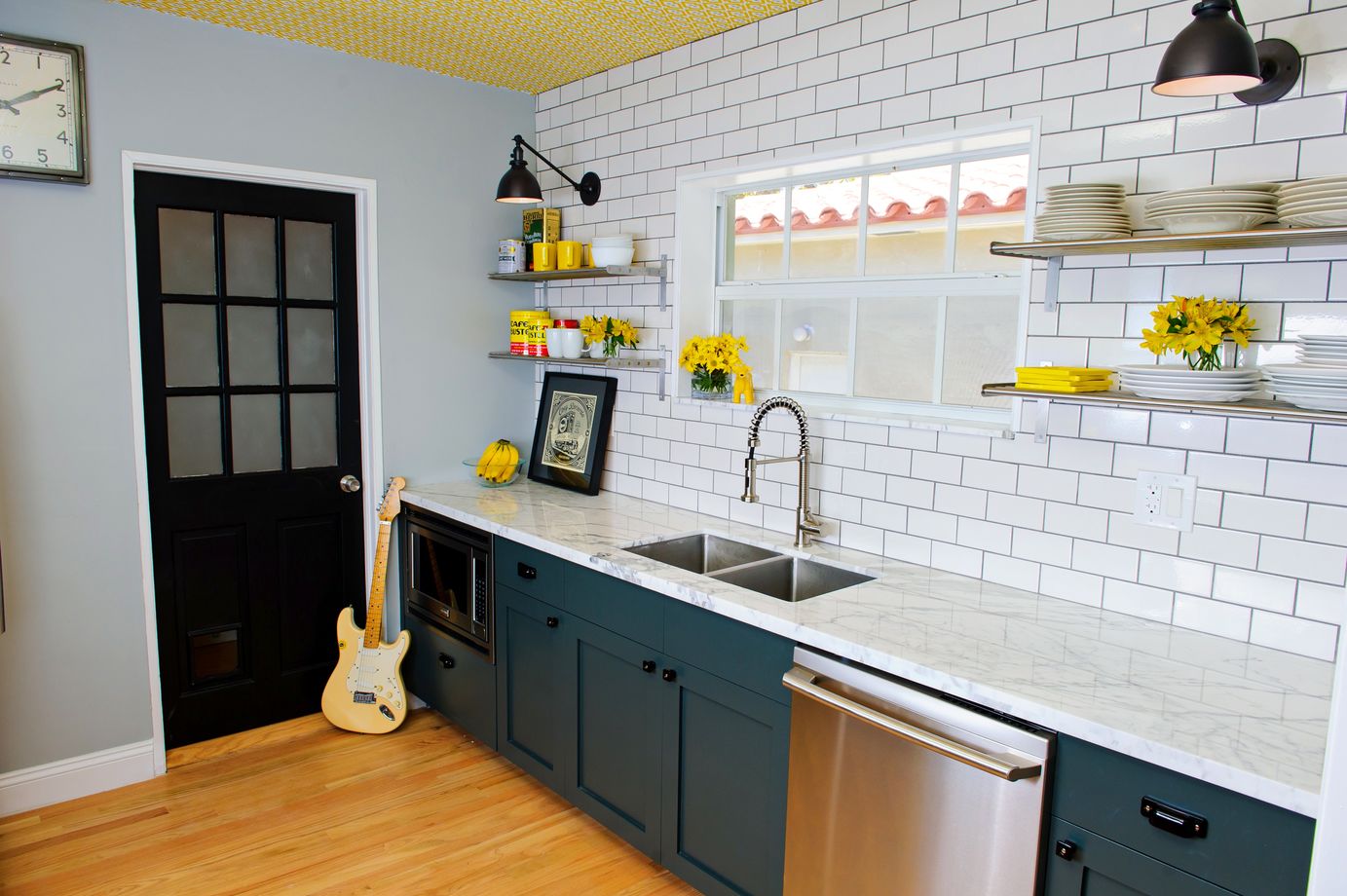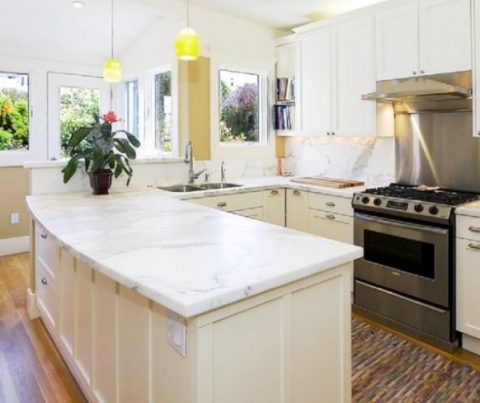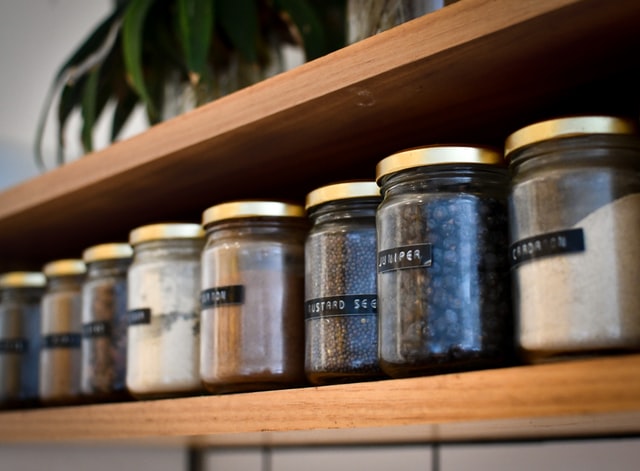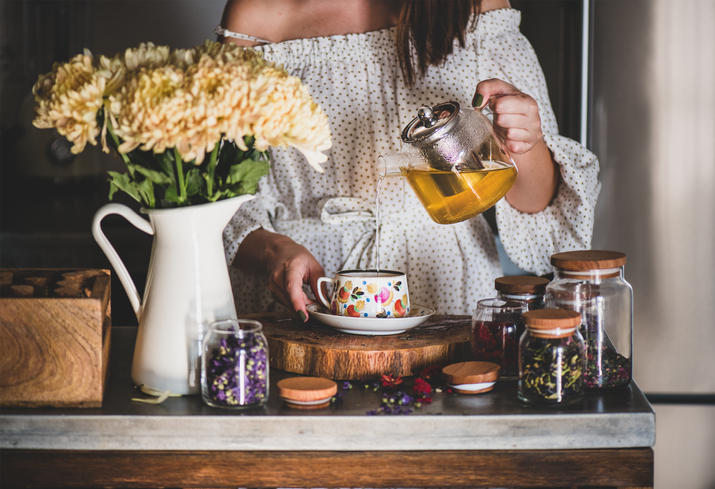Countertops are more than just a statement piece in your home. You use them every day, in a variety of tasks, so it’s essential that they withstand wear and tear. There are a range of different materials and pricing options available, which can be overwhelming if you’re venturing into unchartered waters. When making your decision, consider the function and aesthetic requirements of your ideal countertop, and then evaluate the pros and cons of each material.
While there is an extensive variety of alternate materials, here are a few of the most popular options and current countertop trends.
Granite – good for kitchens and bathrooms.
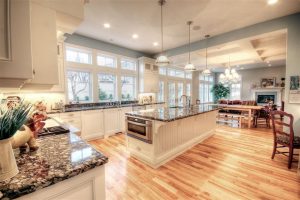
Photo: Renovation Design Group
Pros: A popular option among kitchens and bathrooms, granite is timeless and never fails to add a touch of class to your space. Every slab is unique in its veining and coloring and still the most popular material for designer kitchens. It is long lasting, durable to heat and scratches, and when properly sealed, it’s easy to clean. It’s also eco-friendly!
Cons: It is a more expensive option for your home and the porous material requires it to be sealed every 6 months to 1 year. It is vulnerable to chips and cracks, primarily on the edges, and is highly susceptible to citric acid, such as vinegar and lemon juice.
Quartz (engineered stone) – good for kitchens and bathrooms
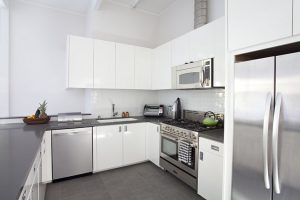
Photo: Klopf Architects
Pros: These counters give off a similar classic feeling granite top, but require less maintenance while also being highly durable. Unlike granite, it is not 100% natural, but this allows it to be less porous and more resistant to stains and scratches. Its resistance towards heat, makes it great to sustain both hot pans and curling irons!
Cons: It’s a more costly option, being in the same range as granite or marble. It’s also best left to be installed by a professional.
Laminate – best for bathrooms.
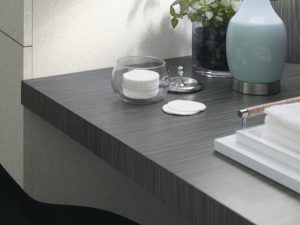
Photo: Formica Corporation via HGTV
Pros: A practical, cost-friendly option that offers a multitude of colors, patterns and textures makes laminate the go-to option for vanity tops. They are low maintenance and easily cleaned with soap and water, while highly resistant to grease and stains.
Cons:The material is easily damaged by heat and is susceptible to nicks and cuts. While easily installed, damaged areas are more difficult to repair and can be a more expensive fix.
Soapstone – good for kitchens or bathrooms.
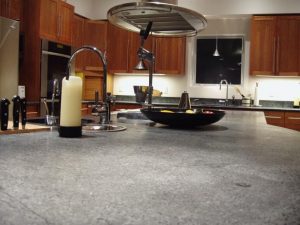
Photo: HGTV
Pros: Soapstone has a similar aesthetic to granite, but has a natural softness that makes it ideal for older and cottage-style homes. It is non-porous and is resistant to acidic material, holding up well against stains, bacteria and liquids such as lemon juice. Soap and water are all that’s needed for cleaning, making it a low maintenance option.
Cons: The softness of soapstone makes it susceptible to nicks and scratches. Soapstone darkens over time, so if you are matching a specific color scheme, soapstone may not be the best fit. Polishing it every so often is recommended for best conditions. Price is similar to high-end granite.
Tile – good in kitchens and bathrooms.
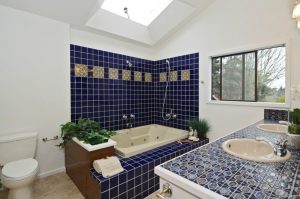
Photo: Sound Painting Solutions LLC
Pros:Tile is a budget friendly, popular option for countertops. It comes in a wide range of sizes, colors and materials (mainly ceramic or porcelain) of tiles that allow you to create a counter unique to you. They are resistant to heat and stains and you can replace individual tiles for less expensive maintenance.
Cons: Tile grout requires regular maintenance and cleaning and the tiles can be easily scratched.
Tip: Using a darker or colored grout won’t show dirt as quickly. Larger tiles require less grout lines, as well.
Concrete – best for kitchens.
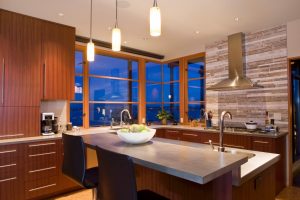
Photo: Prentiss Architects
Pros: Concrete is a great, durable option that offers a variety of tints while being able to be poured/filled into specific shapes for a kitchen unique to you. Small stones and accent materials are also able to be added in when being poured.
Cons: While DIY concrete counters are becoming an increasingly popular project, it is best left to professionals to properly poured, installed and sealed onsite. Concrete must be resealed every few years and broken portions can be difficult to repair with overall prices comparable to classic stone countertops. The material is also very porous and easily stained.
Stainless steel – best for kitchens.
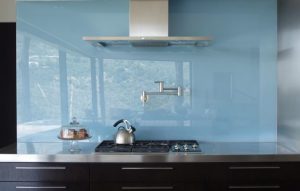
Photo: Griffin Enright Architects
Pros: This is a great option for a contemporary, industrial style kitchen. It is extremely tough towards high temperatures and stains. Like laminate, it is easily cleaned with soap and water.
Cons: Susceptible to scratches and can easily dent if not properly supported. Stainless steel also tends to easily show smudge marks and thumbprints, which would require more frequent cleanings if you’re the type of person who could find this bothersome.
Tip: Use stainless steel countertops in small portions of the kitchen, such as near the cooktops or for the sink.
Glass – good for both kitchens and bathrooms.
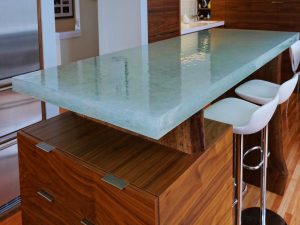
Photo: Right Angle Productions via HGTV
Pros: Glass countertops inject elegance to any kitchen or bath, while still being easy to clean and maintain. They are heat, stain, and scratch resistant while easily cleaned with just soap and water.
Cons: Glass material is similar in price to granite and should be installed by a professional. Glass is more delicate than stone and if broken, will need to be replaced.
Tip: Good for an accent piece, such as a bar or island.
Hardwood – best for kitchens
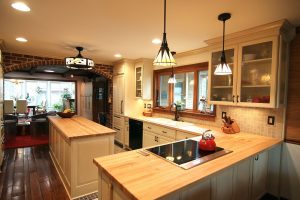
Photo: Criner Remodeling
Pros: Hardwood countertops give off a warm and cozy feeling by incorporating natural elements in your kitchen. They can be easily installed and can be a very reasonably priced option. If you are looking for a more eco-friendly option, you can also use reclaimed wood to give a rustic feel.
Cons: While being a very beautiful option, hardwood counters need to be treated with care. They require diligent maintenance and frequent staining, as they are susceptible to moisture and heat. If left unsealed, periodic mineral oil treatment is required and hardwood counters must be cleaned immediately after food preparation on them to prevent bacteria build up.
Tip: Like stainless steel, hardwood counters are best used for a smaller elements of the kitchen, such as an island or for a smaller portion butcher block.
Speak to a local Countertop Specialist
Top photo: Errez Design
